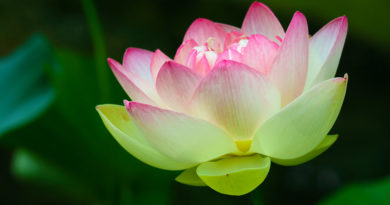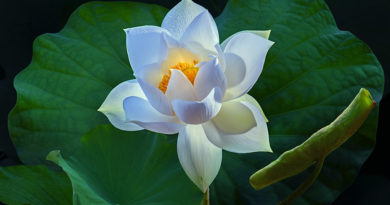Answers By Mr. S. N. Goenka: Addiction
MAIN CONTENT
तुम्हेहि किच्चमातप्पं, अक्खातारो तथागता।
पटिपन्ना पमोक्खन्ति, झायिनो मारबन्धना॥
-You have to do your own work; Enlightened Ones will only show the way. Those who practice meditation will free themselves from the chains of death.
– Dhammapada 276, Lokavagga
In the course of his Dhamma work, beginning in 1969, Goenkaji has been asked thousands of questions, by Vipassana students and others all over the world. The questions range a fascinating spectrum from what is Dhamma, Vipassana meditation, aim of life, human misery, God, rebirth to insomnia…. The answers and questions have been broadly categorized under various sections based on the nature of the question. It must be remembered, however, that Goenkaji’s favourite answer is always: “You must experience the truth yourself. Only then it becomes a truth for you. Otherwise it is only someone else’s truth”. To Vipassana students, Goenkaji has always emphasized that the real answers can only come from continuous and correct practice of Vipassana. The Q & A Bank, therefore, serves as a guide and inspiration to Vipassana students, and an encouragement to non-students to undertake a Vipassana course, and directly experience its immense benefits. Abandoning false illusions, moving towards the truth, may we keep walking step by step, advancing towards the true goal. May all beings be happy!
Addiction
How can we avoid bad habits like smoking cigarettes and chewing pāna?
Mr. S. N. Goenka: Not only smoking cigarettes or chewing pāna—there are so many different types of addictions. When you practice Vipassana, you will understand that your addiction is not actually to that particular substance. It seems as if you are addicted to cigarettes, alcohol, drugs or pāna; but the real fact is that you are addicted to a particular sensation in the body. When you smoke a cigarette, there is a sensation in the body. When you chew pāna, there is a sensation in the body. When you take a drug, there is a sensation in the body. Similarly, when you are addicted to anger or passion, these are also related to body sensations. Your addiction is to the sensations. Through Vipassana you come out of that addiction. You come out of all outside addictions also. It is so natural, so scientific. Just try and you will find how it works.
This technique is very practical, but can everybody benefit from it—even those who suffer from severe addictions, such as to drugs or alcohol?
Mr. S. N. Goenka: When we talk of addiction, it is not merely to alcohol or to drugs, but also to passion, to anger, to fear, to egotism: all of these are addictions. All these are addictions to your impurities. At the intellectual level you understand very well: “Anger is not good for me. It is dangerous. It is so harmful.” Yet you are addicted to anger, you keep generating anger. And when the anger has passed, you keep repenting: “Oh! I should not have done that. I should not have gotten angry.” Meaningless! The next time some stimulation comes, you become angry again. You are not coming out of it, because you have not been working at the depth of the behavior pattern of your mind. The anger starts because of a particular chemical that has started flowing in your body, and with the interaction of mind and matter—one influencing the other—the anger continues to multiply.
By practicing this technique, you start observing the sensation which has arisen because of the flow of a particular chemical. You do not react to it. That means you do not generate anger at that particular moment. This one moment turns into a few moments, which turn into a few seconds, which turn into a few minutes, and you find that you are not as easily influenced by this flow as you were in the past. You have slowly started coming out of your anger.
People who have come to these courses go back home and apply this technique in their daily lives by their morning and evening meditation and by continuing to observe themselves throughout the day—how they react or how they maintain equanimity in different situations. The first thing they will try to do is to observe the sensations. Because of the particular situation, maybe a part of the mind has started reacting, but by observing the sensations their minds become equanimous. Then whatever action they take is an action; it is not a reaction. Action is always positive. It is only when we react that we generate negativity and become miserable. A few moments observing the sensation makes the mind equanimous, and then it can act. Life then is full of action instead of reaction.
This practice morning and evening, and making use of this technique in daily life—both of these start to change the behavior pattern. Those who used to roll in anger for a long time find their anger decreases. When anger does come, it cannot last for a long period because it is not so intense. Similarly, those who are addicted to passion find that this passion becomes weaker and weaker. Those who are addicted to fear find the fear becoming weaker and weaker. Different kinds of impurities take different amounts of time to come out of. Whether it takes a long time to come out of them, or a short time, the technique will work, provided it is practiced properly.
Whether you are addicted to craving—or aversion, or hatred, or passion, or fear—the addiction is to a particular sensation that has arisen because of the biochemical flow (asava). This type of matter results in reaction at the mental level, and the reaction at the mental level again turns into this biochemical reaction. When you say that you are addicted, you are actually addicted to the sensation. You are addicted to this flow, this biochemical flow.
The asava of ignorance is the strongest asava. Of course there is ignorance even when you are reacting with anger or passion or fear; but when you get intoxicated with alcohol or drugs, this intoxication multiplies your ignorance. Therefore it takes time to feel sensations, to go to the root of the problem. When you get addicted to liquor, or addicted to drugs, you cannot know the reality of what is happening within the framework of the body. There is darkness in your mind. You cannot understand what is happening inside, what keeps on multiplying inside. We have found that in cases of alcohol addiction, people generally start benefiting more quickly than people who are addicted to drugs. But the way is there for everyone to come out of misery, however addicted they may be, however ignorant they may be. If you keep working patiently and persistently, sooner or later you are bound to reach the stage where you start feeling sensations throughout the body and can observe them objectively. It may take time. In ten days you may only make a slight change in the habit pattern of your mind. It doesn’t matter; a beginning is made and if you keep practicing morning and evening, and take a few more courses, the habit pattern will change at the deepest level of the mind and you will come out of your ignorance, out of your reaction.
We keep advising people who are addicted to smoking—even ordinary tobacco smoking—that if an urge arises in the mind, not to take the cigarette and start smoking. We advise them: “Wait a little.” Just accept the fact that an urge to smoke has arisen in the mind. When this urge arises, along with it there is a sensation in the body. Start observing this sensation, whatever the sensation may be. Do not look for a particular sensation. Any sensation at that time in the body is related to the urge to smoke. And by observing the sensation as impermanent, anicca, it arises, it passes; it arises, it passes; and in ten minutes, fifteen minutes, this urge will pass away. This is not a philosophy but the experiential truth.
Similarly, for those who are addicted to alcohol or addicted to drugs, when an urge arises, we advise them not to succumb immediately, but to wait ten or fifteeen minutes, and accept the fact that an urge has arisen, and observe whatever sensation is present at that time. By applying these instructions, they have found that they are coming out of their addictions. They may not be successful every time, but if they are successful even one time out of ten, a very good beginning has been made because the root has started changing. The habit pattern lies at the root of the mind, and the root of the mind is strongly related to the sensations on the body: mind and matter are so interrelated, they keep on influencing each other.
If this law, this law of nature, is merely accepted intellectually, or devotionally, the benefit will be minimal—it may inspire you to practice. But the real benefit accrues through the actual practice. It is a long path, a lifetime job. Even a journey of ten thousand miles must start with the first step. For one who has taken the first step it is possible that one will take the second step, the third step, and like this, step by step, one will reach the final goal of full liberation.
Source: https://www.vridhamma.org







